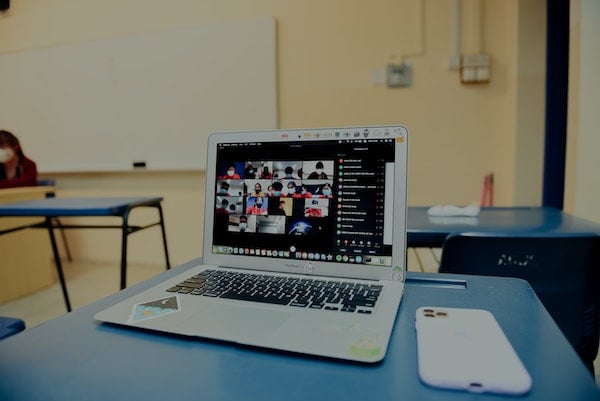Published on
Is There a “Right” Answer? Stimulating Online Discussion in the Age of COVID-19

As the COVID-19 pandemic continues to wreak havoc on colleges’ plans, many administrators and faculty are getting used to the likelihood that for most (if not all) of them, much of next semester’s instruction will also take place online.
For many instructors, this amounts to teaching students without a lot of context about who they are, how they learn, and what matters to them. In an online context, personally meaningful one-on-one interactions are typically limited, and the opportunities for nuanced, customized feedback are constrained. And it’s all happening at a time when students are facing more uncertainty, stress, and trauma than ever. In many cases, it’s likely to be a recipe for miscommunication and misunderstanding–if not outright conflict.
How can instructors reach students and achieve learning outcomes in online spaces where they may not have as many cues about students’ backgrounds and experiences, especially in asynchronous exchanges? An understanding of adults’ cognitive development processes may help instructors navigate their students’ approaches to learning–not to mention their emotional responses–during a complex and tumultuous semester.
Research indicates that in late adolescence and emerging adulthood, cognition is characterized by a tendency to think in absolutist ways (e.g., seeking the one, right answer). Such thinking is grounded in a tight internal logic, built on supposed evidence that students gather from a variety of sources, including personal experience, influencers and authority figures, and deduction from existing beliefs and premises. The decisions and positions they take are strongly believed and held, and are applied as solutions across all contexts. Simply put, these students’ cognition tends to be less nuanced than it is when they grow older.
Later on, as young adults are confronted with ambiguous, complicated situations that do not neatly conform to absolutist solutions, in which multiple solutions or viewpoints may be true at once, things change. They begin to see the world with greater nuance. That means they’re able to hold multiple, sometimes contradictory, solutions in mind simultaneously and realize that there are multiple, valid solutions to “wicked” problems. A common outcome for such thinkers is to take the stance that there are no correct answers or universal principles; rather, the right course of action is situationally determined each time.
Many college students are at the precipice of this inflection point: in scientific terms, moving from formal operational or absolutist thinking to reflective judgment. In an ordinary year, regular in-person interaction with instructors and peers often helps facilitate this shift. As they engage with the broader campus community, students come in contact with all sorts of new situations and challenges, which encourages a mindset shift to less rigid thinking. The classroom experience, and particularly class discussions, play an especially critical role in helping students navigate that transition. It is in discussion settings that many college students have their strongly held ideas challenged for the first time and come face to face with the reality that there is rarely one right answer.
Of course, the pandemic has made synchronous face-to-face small-group discussions much more difficult. Is it even possible to foster the same challenging, motivating experiences in a fully online setting?
As it turns out, a thoughtful, creative approach to online learning may provide a more effective environment for student-led discussion than one might think–a type of discussion which, more than any other, helps students confront their beliefs and experiment with reflective judgment. Emerging research into online platforms like Packback, which takes an inquiry-based approach to facilitating discussion, suggests that these tools can encourage student participation in ways that both build in the advantages of face-to-face settings, and provide private, personalized feedback. Such platforms enable students to iterate their responses before posting them and to contribute to complex conversations with less anxiety about being judged by their peers.
Online discussion of this sort also provides a unique set of tools for instructors to provide feedback that takes into account students’ primary (default) mode of thinking–and what that means about how they will handle criticism. Tailoring feedback based on students’ primary mode of thinking works by guiding and exposing students to new ideas without confrontation–because discussion helps to open up these new ideas in a less threatening way. For instance, in response to a post in which a student is quite definitive, the student could be encouraged through a second post to choose a different perspective (or role) from which to analyze the situation.
An essential aspect of this approach is refraining from claiming that the student is wrong but to simply encourage the adoption of a different personal vantage point. Ideally, as a result of this student-led approach, students who may see the world in absolutist ways are exposed to peers’ firsthand accounts that do not conform to their own, providing a hook to help open them to other, alternative interpretations.
It’s worth noting that college students aren’t the only ones to take seemingly absolutist cognitive positions. As adults mature, they come to understand that a situational, context-dependent strategy for dealing with problems has its limits. They begin to feel a need for a set of principles they can apply across situations–a set of higher-order ethics and morals grounded in different types of situations but based on in-depth analyses of multiple situations that inform the creation of personal ethical and moral principles serving as a compass for one’s behavior. Those resulting principles are strongly held and may appear similar to the inflexibility of common thinking among adolescents and emerging adults.
Coupled with the realities faced by the many adult learners who balance work and family commitments in addition to their studies, those aspects of cognitive development can make it equally challenging for older learners to engage critically with other points of view. Adult learners can contribute richly to class discussion by bringing in a wealth of real-world experiences that younger students don’t always have. But they may also face a different set of challenges that instructors must take into account.
Note the differences in cognitive development between these types of learners: adolescents and emerging adults do not test solutions across situations, as do more mature adults, before landing on a solution. What does that mean for online discussion? Simply that faculty must probe for the processes, if any, that underlie a student’s choice and application of a solution.
If the pandemic has made one thing clear, it’s that there will likely not be one right answer for the seemingly insurmountable set of challenges now facing us. But classroom discussion will play an instrumental role in helping students understand that just because there’s no single answer doesn’t mean there aren’t answers–to address, respond to, and alleviate big, complex wicked problems. And just because that type of discussion can’t happen synchronously face-to-face this semester doesn’t mean it’s not possible to help students learn an openness to changing one’s mind is one reflection of learning–at a time when deeper and more nuanced thinking has perhaps never been more important.
Disclaimer: Embedded links in articles don’t represent author endorsement, but aim to provide readers with additional context and service.
Author Perspective: Administrator


